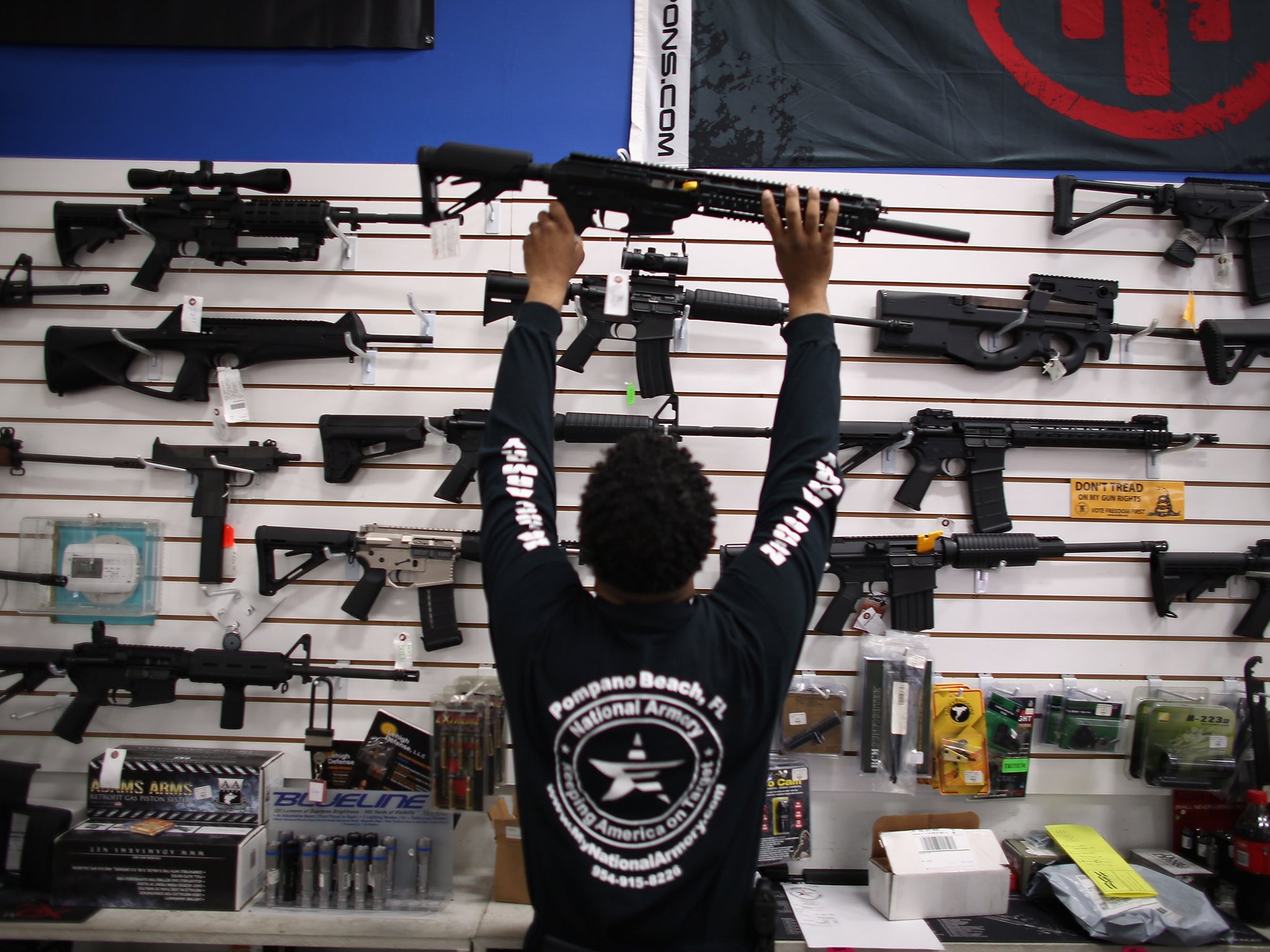Americans 'much likelier to be killed by guns' than people in other countries
Research finds rate of deaths involving guns 10 times higher in the US than other populous, high-income countries

When nine people are gunned down at an Oregon community college, or 14 people fatally shot at a holiday party in California, or nine parishioners killed at a church in Charleston, the world pays attention. These bursts of violence are terrifying and specific, mass killings of the sort that can break through what is otherwise the grim, pervasive background noise of gun violence in America. This daily parade of shootings and killings can capture local attention and live in brief segments on the news and frighten communities and they otherwise come and go without much public notice.
How unusual is this, though? How does it actually compare to life in other countries? Researchers recently decided to see, using the World Health Organization’s 2010 mortality data to compare rates in the United States with those found in other populous, high-income countries, including the UK, Germany and France.
The numbers they found suggest that a person is much, much more likely to be killed by a gun in the United States than in any of these other countries, and it isn’t remotely close. The gun homicide rate in the United States was more than 25 times higher than in other high-income countries, according to a new study in the American Journal of Medicine that examined death rates per 100,000 people.
In the United States, the overall homicide rate is seven times higher than these other countries, while the homicide rate when discounting guns was 2.7 times higher, the study said.
All told, the rate of deaths involving guns in the United States was 10 times higher than these other countries.
This study looked at a total of 23 countries — the United States included — and the US accounted for a little less than half of the residents covered by the research. But, the researchers noted, more than 8 in 10 gun-related deaths they saw still took place in the United States, and 9 out of 10 women and children killed by guns were in the United States.
The study also noted that while the firearm death rate in other countries fell between 2003 and 2010, it was unchanged in the United States, further expanding the gap between this country and the others.
This divide was particularly acute for young people. The gun homicide rate for Americans between the ages of 15 and 24 is an astronomical 49 times higher than it is for people that age in other, comparable countries. The rate of unintentional deaths involving guns was also more than six times higher here.
The study’s authors, Erin Grinshteyn and David Hemenway, wrote that their research showed a country with “an enormous firearm problem.” Grinshteyn is an assistant professor at the University of Nevada, Reno, while Hemenway is a professor at the Harvard School of Public Health.
All told, car crashes and guns kill roughly the same number of Americans annually, according to the Centers for Disease Control and Prevention. More than 33,000 people are killed in vehicle crashes and by firearms each year, and firearm deaths were able to catch up largely because of the big drop in how many Americans were killed in traffic accidents over the last half-century.
Funding for gun-related research was decimated after it was targeted by the National Rifle Association and its allies in Congress, a decision that reverberates two decades later. “We have to understand what the problem is, how to approach the problem, and do our approaches work,” Hemenway, director of the Harvard Injury Control Research Center, told the Trace last year about the problems involving funding for gun research. “And we just don’t know anything.”
The FBI has said that the number of overall violent crimes increased last year, which came as murder rates also went up in cities nationwide after years of falling violent crime. Americans, for what it’s worth, are generally very convinced that crime is going up, saying that they think crime is on the rise year after year, even when it turns out it was declining.
Gun homicides have fallen considerably in recent decades, declining by about half since the early 1990s. While dozens of people are fatally shot each day, the total gun death rate has fallen by nearly a third since 1993, according to a Pew Research Center analysis of death certificate data. There is one worrisome exception, though: While the gun homicide rate has remained flat in recent years, the gun suicide rate has ticked up since 2010.
According to the new study comparing the United States to other countries, suicides involving guns were also a much bigger issue here than elsewhere. Two out of three gun deaths in the United States are suicides, the CDC reports. And the new study shows that the rate of suicides involving guns was eight times higher in the United States than other countries.
In the new study, Grinshteyn and Hemenway wrote that their research shows that the country “suffers disproportionately from firearms,” ultimately coming to this conclusion: “These results are consistent with the hypothesis that our firearms are killing us rather than protecting us.”
© Washington Post
Join our commenting forum
Join thought-provoking conversations, follow other Independent readers and see their replies
Comments